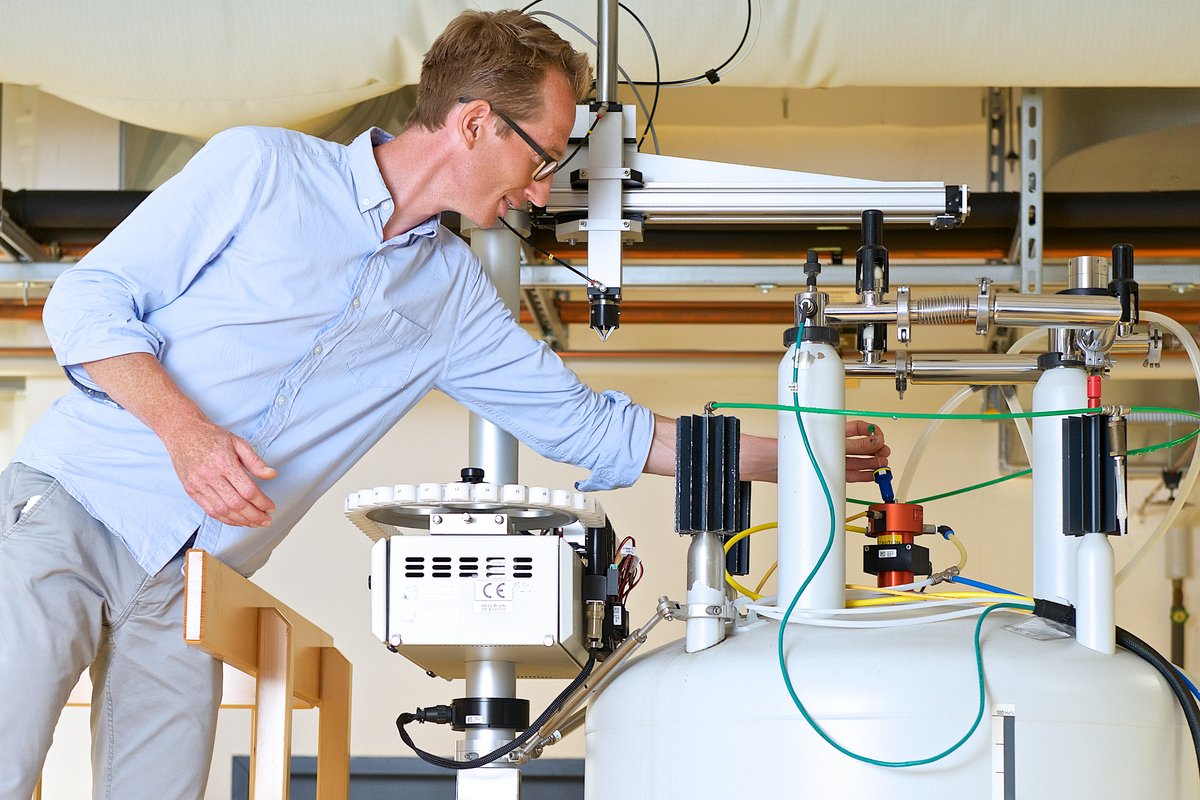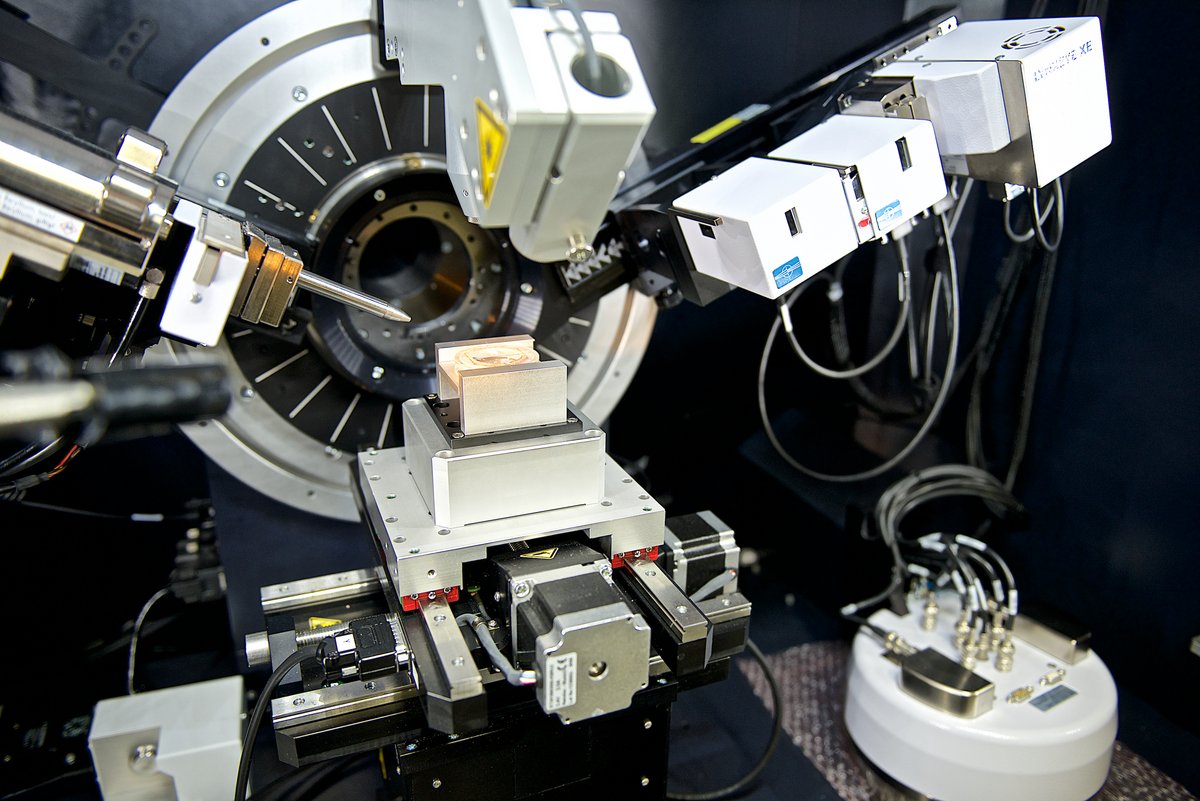The Department of Chemistry houses a range of outstanding facilities, benefiting both our students and researchers across the university. Our state-of-the-art laboratories are fully equipped for biochemical, cell-biological and molecular-biological research and include glove boxes, microwave reactors, pipetting robots and synthesizers. Modern SPR and ITC methods are available for characterizing biomolecular interactions, CD-spectroscopy for structural investigations. The Proteomics Centre houses several mass spectrometers for the identification and characterization of biopolymers.
We have several cutting-edge NMR spectrometers (including a high-resolution 800 MHz spectrometer), as well as a number of spectrometers for routine applications.

Several EPR spectrometers are are available for studying paramagnetic samples, with a special focus on EPR imaging as well as on distance measurements which are crucial for the conformational analysis of complex macromolecules. Our researchers can use ultrafast vibrational spectroscopy to study conformational changes in proteins, induced either thermally or by a pulsed laser. They also have access to modern luminescence spectrometers to investigate the properties of light-emitting compounds.
Several potentiostats are available for electro-chemical analyses. Features for analyzing macromolecules of either synthetical or biological origin include size exclusion chromatography (GPC), also at high temperature, coupled light-dispersion HPLC and differential thermoanalysis (DSC).
Soft and hard materials are investigated primarily by atomic force microscopy (AFM) and transmission electron microscopy (TEM, 120 keV energy-filtered). Cryo-preparation, Cryo-microtomy and Cryo-TEM allow studying the inner structure of samples of relatively soft matter down to sizes of a few nanometers. The electron microscopy facilities are part of the Nanostructure Laboratory, which we run jointly with the Department of Physics.
In the Particle Analysis Centre, our researchers have access to: static and dynamic light scattering, zeta potential measurements, analytical ultracentrifugation, particle-tracking microscopy, light microscopy, preparative ultracentrifugation – with the option of using a zonal rotor – and wide-angle x-ray scattering.

